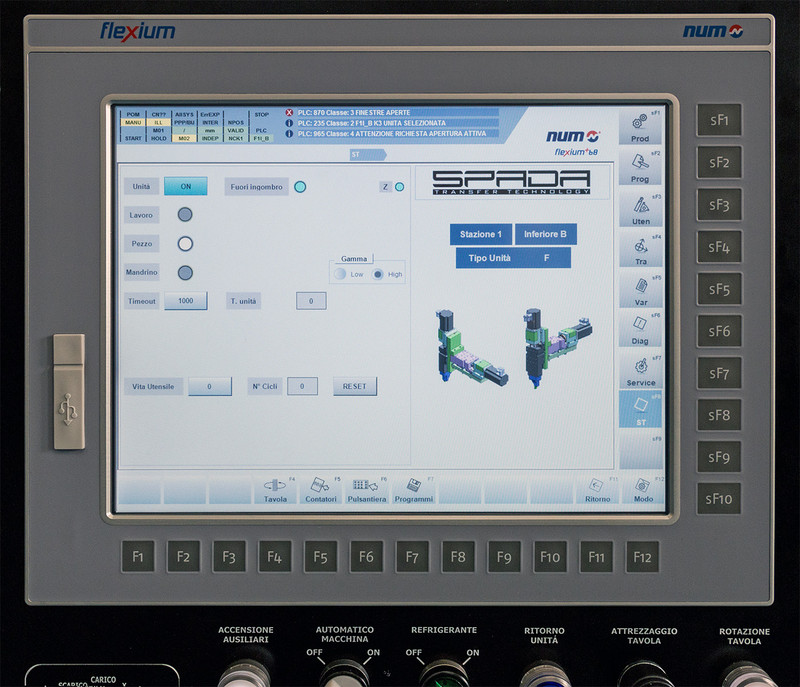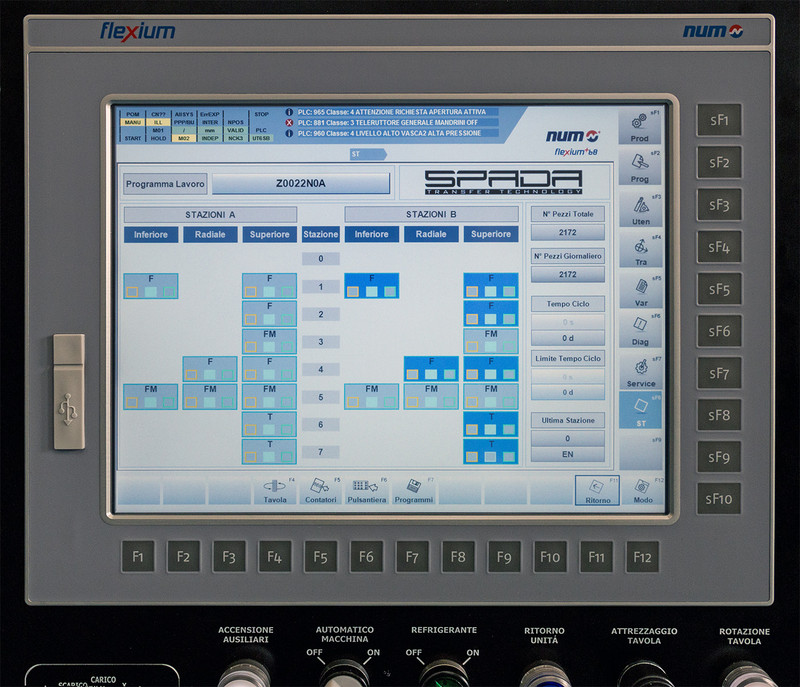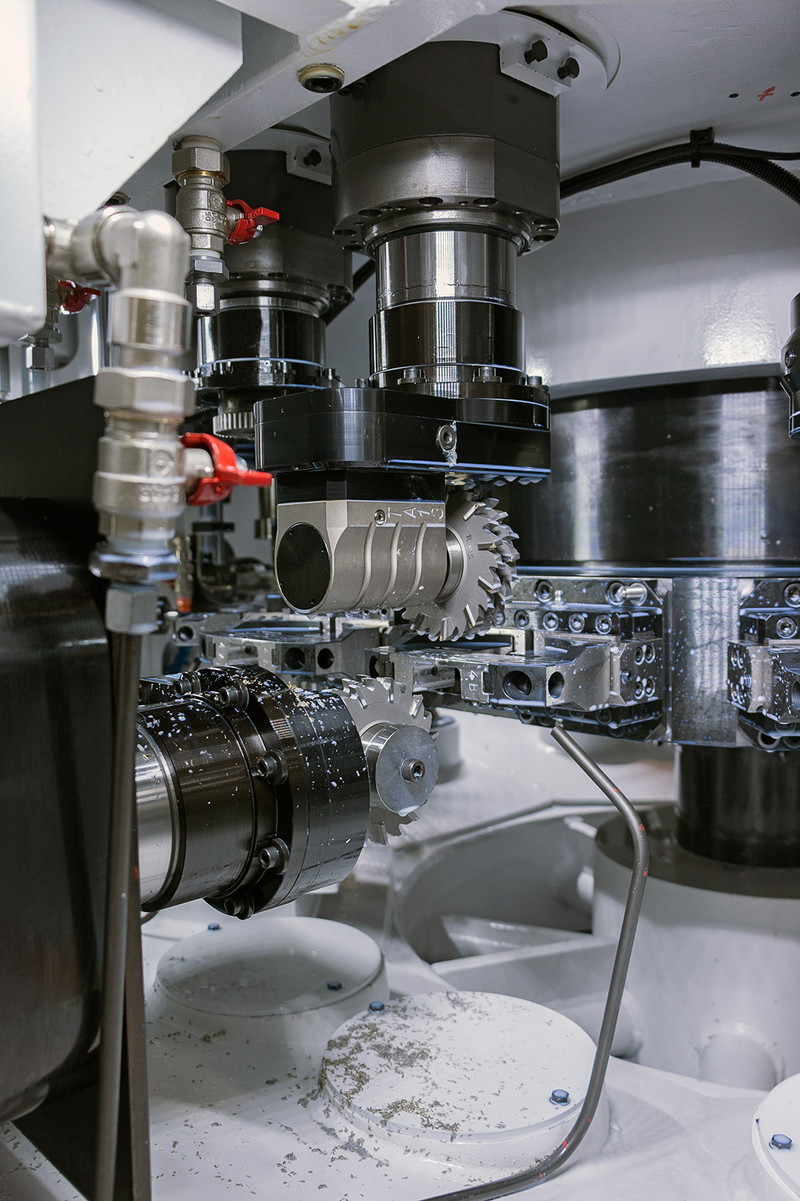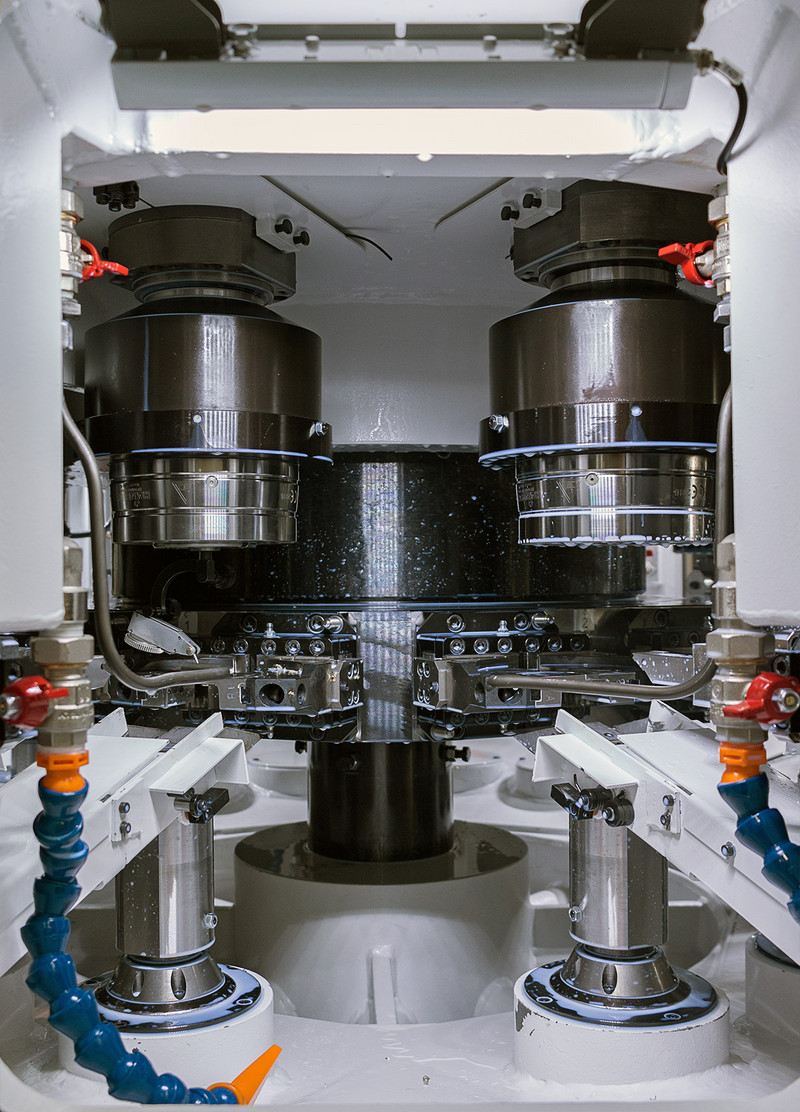An innovative, precision multi-spindle transfer machine - powered by NUM
Experience, reliability, advanced technology and impeccable after-sales service – these are just some of the benefits that SPADA offers to its customers. SPADA is an Italian manufacturer of machine tools and multi-spindle transfer machines. Embracing the same philosophy as NUM, SPADA is a qualified partner, helping customers to achieve unbeatable competitiveness. Founded in 2009, this young company has 22 employees. The Multi S machine shown on these pages has 33 axes, 25 spindles and runs on 25 channels with 4 NCK. The machine is powered by a NUM Flexium+ 68 CNC system. The special center-focused architecture of the Multi S has numerous advantages, which we will highlight in this article.
The SPADA machines’ flexibility and modularity mean their field of use is quite extensive. In terms of the number of machines delivered, the biggest sectors are the automotive and motorcycle industries, manufacturing of hydraulic and pneumatic components, electric motors and power transmission systems. The ISO certified company has so far built over 300 machines of various types, which are used for production purposes in over 16 countries around the globe.
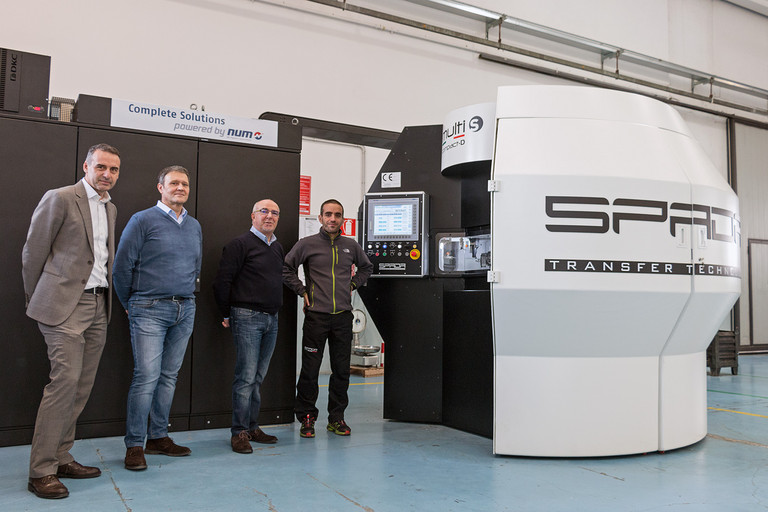
This flexibility is also the most important advantage of the Flexium+ CNC control from NUM, which is used on the SPADA machines. A special customized HMI was developed which focused on ease of use and getting the operators familiarized with the process quickly. Also, the HMI significantly helps the operator change from one production phase to the next, reducing the set-up time and increasing overall productivity. The Multi S machine shown here is very precise – even if the machine is running at high speed to achieve a high workpiece production rate, the quality is also still very high. Even at high speed, the machine has an accuracy of 0.01 mm, a factor that makes the SPADA machine a superb fit in the high precision sectors of industry.
Due to the flexibility of the SPADA machine and the NUM CNC control, the machine settings can be very quickly and easily changed for the production of the next workpiece or component. The machine allows all types of machining, such as milling, drilling, cutting, etc.. Regarding the compact and revolutionary architecture of the Multi S, the distances between the various working stations in the machine are minimized, which helps to significantly reduce the production time of a single workpiece. And as we all know, reducing production time means that a higher quantity of workpieces can be produced in a given time, enabling the owner of the Multi S to obtain the best return on investment.
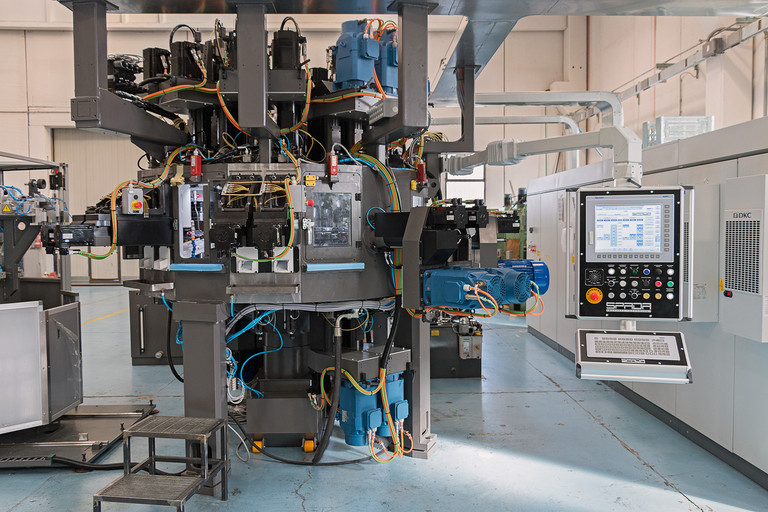
Another advantage for SPADA’s customers is that their machines are very compact, minimizing the floor space required. If you take a look at the architecture, you will notice that the working area is in the center of the machine, like a circle with all axes and spindle motors built around this center, either from above, below or from the side. A quick look highlights many of the advantages of this design. First of all, access to all motors for axes and spindles, as well as other mechanical parts, is very easy. Consequently, the time for which the Multi S stands idle during maintenance is shorter than similar types of machines. Also, all the motors of the axes and spindles – and other mechanical parts – are outside of the working area. This means that these parts suffer less from water or oil cooling fluids or temperature changes, as they normally do in such machines. But here in the Multi S, these parts stay dry and more or less keep the same temperature throughout the time the machine is in use.
“Since the beginning, cooperation between SPADA and NUM has been very intensive and very good”, says Mr. Spada. “The modular NCK architecture helps SPADA to develop new possibilities for future machines”, adds Mr. Battistotti of NUM. By cooperating closely, both SPADA and NUM are able to improve the production quality and quantity for their customers and provide them with a key market advantage.
(September 2017)


